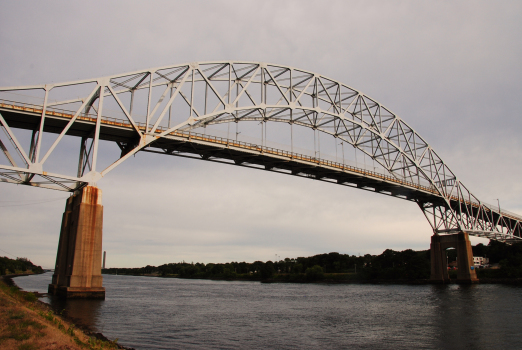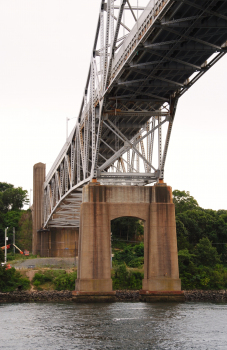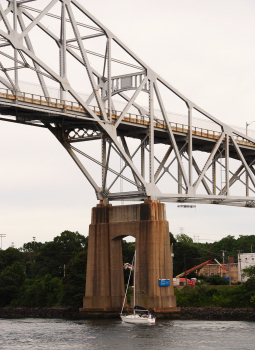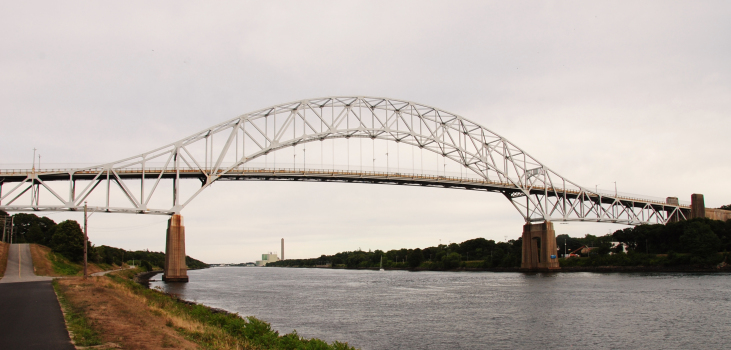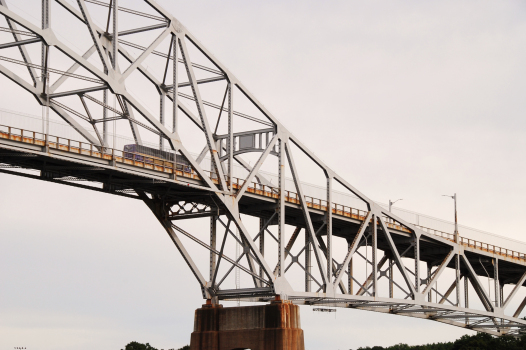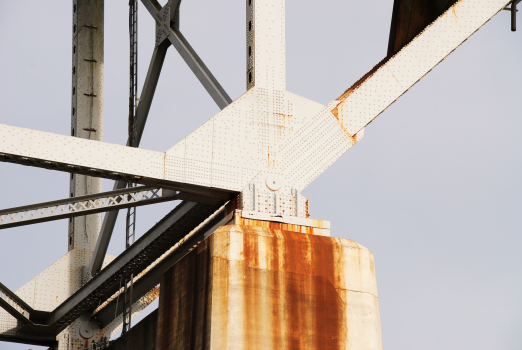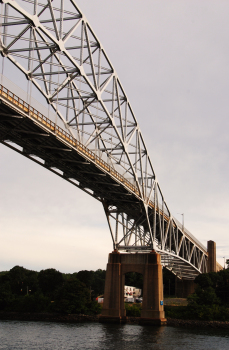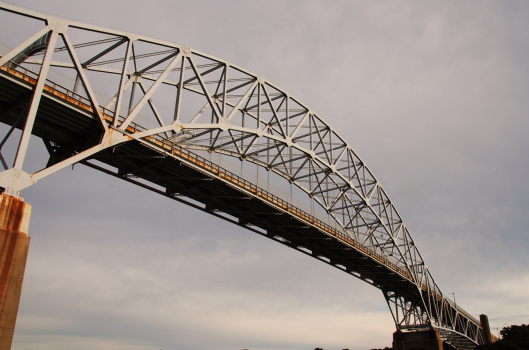General Information
| Completion: | 22 June 1935 |
|---|---|
| Status: | in use |
Project Type
| Structure: |
Truss arch bridge |
|---|---|
| Function / usage: |
Road bridge |
| Material: |
Steel bridge |
| Structure: |
Through arch bridge |
| Support conditions: |
for registered users |
| Material: |
Structurae Plus/Pro - Subscribe Now! |
Awards and Distinctions
| 1935 |
Honorable Mention
for registered users |
|---|
Location
| Location: |
Sagamore, Barnstable County, Massachusetts, USA |
|---|---|
| Crosses: |
|
| See also: |
Bourne Bridge (1934)
|
| Coordinates: | 41° 46' 34.23" N 70° 32' 35.93" W |
Technical Information
Dimensions
| main span | 187.8 m | |
| deck | number of lanes | 4 |
| roadway / carriageway width | 12.2 m |
Materials
| arch |
steel
|
|---|
Chronology
| 22 June 1935 | Dedicated and opened to traffic. |
|---|
Excerpt from Wikipedia
The Sagamore Bridge in Sagamore, Massachusetts carries Route 6 and the Claire Saltonstall Bikeway across the Cape Cod Canal, connecting Cape Cod with the mainland of Massachusetts. It is the more northeastern of two automobile canal crossings, the other being the Bourne Bridge. Most traffic approaching from the north follows Massachusetts Route 3 which ends at Route 6 just north of the bridge, and the bridge provides direct expressway connections from Boston and Interstate 93.
There is a six-foot wide sidewalk for pedestrian and bicycle access on the east side of the bridge. The sidewalk is slightly raised, but there is no fence or barrier between it and car traffic, so cyclists are recommended to walk their bicycle. The bridge road is plowed in winter, although the sidewalk is sometimes unplowed and unpassable. The bridges to the Cape are sometimes closed for safety during high winds.
History
The bridge and its sibling the Bourne Bridge were constructed beginning in 1933 by the Public Works Administration for the U.S. Army Corps of Engineers, which operates both the bridges and the canal. Both bridges carry four lanes of traffic over a 616 feet (188 m) main span, with a 135 feet (41 m) ship clearance. They opened to traffic on June 22, 1935. The design of the Sagamore and Bourne bridges was later copied in miniature for the John Greenleaf Whittier Bridge that connects I-95 from Newburyport to Amesbury, Massachusetts.
The bridges replaced a drawbridge which was built before the canal was widened. The original bridge approaches are still visible to the north of the modern bridge, though both approaches are in low-traffic residential areas. In 2004, construction began to replace the rotary that connects Route 6 and Route 3 to the bridge with a trumpet interchange known as the "Sagamore Flyover". This project had been delayed for many years because of a controversy about the disruption of homes and businesses in the area. The project finally commenced because of the severe gridlock at the rotary, which was built to accommodate a much smaller amount of traffic. The flyover was completed in late 2006.
The Army Corps of Engineers replaced the bridge deck, the sidewalk, and the lighting in May 2010. In October 2019, the Army Corps of Engineers recommended replacing the bridge with a wider bridge with four travel lanes, one auxiliary lane in each direction, bike and pedestrian paths, shoulders, and a median. The recommendation said that replacement was more cost-effective than upgrading the existing bridge in order to reduce long summertime backups.
Text imported from Wikipedia article "Sagamore Bridge" and modified on April 6, 2021 according to the CC-BY-SA 4.0 International license.
Participants
Relevant Web Sites
Relevant Publications
- (1958): The Heritage of An Ancestor. privately printed, New Haven (USA).
- About this
data sheet - Structure-ID
20008034 - Published on:
08/02/2003 - Last updated on:
25/12/2023

